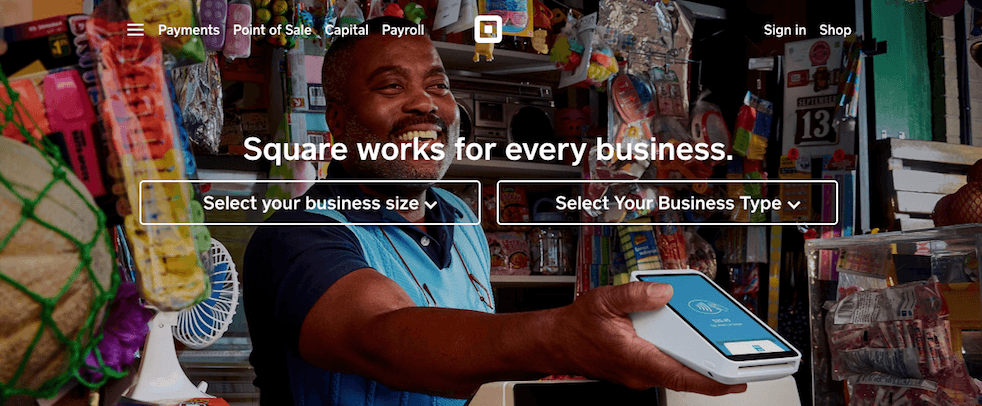- Nov 07, 2018
 0
0- by A2 Marketing Team
Whenever you sell goods online, it’s important to choose your payment methods carefully. Different platforms have varying fees, ease of use, and encryption methods. Choosing the wrong platform could result in you overpaying, or even putting your customers at a higher risk of data theft.
To help you avoid those problems, we’ve put together a comparison of four of the best payment processors you can use. We’ll compare each option in terms of their pros, cons, and pricing structures. That way, you can choose reliable methods that are a strong fit for your needs.
Along the way, we’ll touch on other key factors such as security, ease of use, flexibility, and restrictions. Let’s get moving!
1. Stripe

First up, Stripe is a fairly new payment gateway that’s nonetheless become very popular. It features a simple payment structure, works in a variety of countries, and offers a lot of flexibility for business owners and developers alike.
Pros:
- Customization. Stripe is the most customizable of all the methods on our list. This includes providing a lot of control over what customer information is collected and stored during each transaction (such as names and mailing addresses).
- Extensions. This processor offers a large library of extensions that enable you to set up useful tools, including automatic appointment booking, analytics, and even automated shipping.
- Integration. Stripe can be easily integrated into popular platforms such as WordPress and WooCommerce.
- Security. When you use Stripe, you’ll benefit from robust encryption and other security features that help to minimize data theft. There’s even a rewards program for programmers who report vulnerabilities.
- International availability. Stripe is currently available in 26 countries, and lets you accept payments from anywhere in the world.
Cons:
- Learning curve. Unfortunately, Stripe can be somewhat confusing to use, especially for beginners. The simplest way to integrate Stripe with your website in via an embeddable checkout form, but that won’t enable you to take advantage of the processor’s advanced functionality. For that, you may need to look into hiring a developer who can build a tool for you to use, or pay an extra fee for Stripe’s Enterprise package.
Fees:
Stripe’s basic fee structure is 2.9% + 30 cents per transaction. You can contact the company directly for an Enterprise quote.
Recommended For:
Stripe is best suited to companies that need a custom payment setup (such as direct appointment booking), or that want to collect a specific types of data about their customers. Due to its DIY setup, Stripe is also ideal for businesses that have the resources to hire IT help.
2. Square

Next on our list, Square is an online payment method with a convenient card reader app. It supports both in-person transactions and online payments.
Pros:
- Ease of use. It’s easy to set up an online store using Square’s drag-and-drop editor. Plus, there are plenty of tools to integrate with major e-commerce systems like WooCommerce.
- Multiple card reader options. Square is very popular with small businesses that need a card reader option for in-person transactions. You can purchase a chip or magstripe reader that plugs easily into a mobile device, saving you time on each transaction.
- Email collection. You can use Square to prompt users to sign up for your email newsletter. If a user chooses to receive an email receipt, you will get access to their email address.
- Large extension library. As with Stripe, Square has an extension library offering tools such as appointment booking, as well as integration with major platforms such as WordPress.
- Customization. For advanced users, Square provides documentation so you (or your developer) can build custom solutions.
- Security. Square uses encryption for the entire checkout process, along with advanced fraud detection software.
Cons:
- Country restrictions. Square is not available worldwide. Currently, it only serves the United States, Canada, the United Kingdom, Australia, and Japan.
Fees:
Square charges 3.5% + 15 cents for manually-entered card transactions. Although this is a lower fee per transaction than other services offer, if you deal in high-value goods that extra 0.6% can add up quickly.
Recommended For:
Square is best suited to companies that have a need for in-person transactions, don’t require complex e-commerce set ups, or are not particularly tech-savvy. Of course, you’ll also need to do business in one of the countries Square serves.
3. PayPal

Founded in 1998, PayPal is one of the oldest online payment platforms. Today it’s a giant, accepting payments almost globally.
Pros:
- Ease of use. It’s very easy to set up a PayPal business account and get started quickly.
- Easy integration with card readers. Like Square, PayPal offers a card reader option for in-person transactions.
- Integration with Content Management Systems (CMSs). Thanks to PayPal’s popularity, there are many options available for integration with popular CMSs. You can either embed a checkout button using HTML, or integrate PayPal on any site using a third-party shopping cart app.
- Global availability. Aside from a short list of restricted countries, PayPal is available around the world.
- Security. PayPal uses encryption and fraud detection to protect your customers’ data.
Cons:
- Business-unfriendly policies. Some PayPal policies can be unfriendly to certain businesses. For example, its seller protection policy does not cover digital goods. This means that even if you deliver the product as promised, the customer could complain and initiate a chargeback. What’s more, PayPal charges a $20 fee for chargebacks if the product in question isn’t covered by the seller protection policy.
Fees:
PayPal charges 2.9% plus 30 cents per transaction in the US. You can also contact the company for a business account quote.
Recommended For:
PayPal is best suited to companies that conduct business globally and require a simple payment method, with an option for card reader integration. Companies selling digital goods may want to avoid PayPal, however, due to its chargeback structure.
4. Authorize.Net

Last but not least, Authorize.net is a robust online payment method geared towards businesses. It’s something of a lesser-known option, but is still worth consideration.
Pros:
- Website integration. There are a variety of third-party tools and more advanced techniques you can use to accept Authorize.net payments on your website.
- Security. Authorize.net offers fraud detection and secure saved customer data, which also saves time on repeat transactions.
- Card reader integration. The platform’s card reader app makes it simple to set up in-person payment systems.
- Time-saving features. Along with the basics, you’ll get access to features such as automatic QuickBooks syncing and invoice generation.
- Customization. Developers can integrate Authorize.net technology into their own apps, digital wallets, and more.
Cons:
- Restricted countries. Authorize.net is currently only available in the United States, the United Kingdom, Europe, Australia, and Canada.
Fees:
Authorize.net charges 2.9% + 30 cents per transaction. As with many of the processors on our list, you can also contact the company for an enterprise plan quote.
Recommended For:
Authorize.net is best for small businesses that want to use a card reader, and are also looking for the option to manage payments through an app or a custom tool.
Conclusion
When choosing the payment gateways for your eCommerce site you’ll use, it’s important to weigh each option’s pros and cons carefully. In addition, you’ll want to keep your business’ unique requirements in mind. For example, you’ll need to make sure the solutions you choose are available in any countries where you plan to conduct business, and can integrate with your website’s platform.
To recap, here are four of the most common payment processors you can use:
- Stripe: Ideal for businesses that have the resources to hire a developer, Stripe provides flexible and secure payment options.
- Square: Very simple to use, Square offers a number of extensions and easy card reader integration.
- PayPal: Available globally, PayPal has a wide range of business solutions available, including integration with many website platforms.
- Authorize.net: This option combines Square’s ease of use with Stripe’s options for custom development.
Image credit: Pexels.












